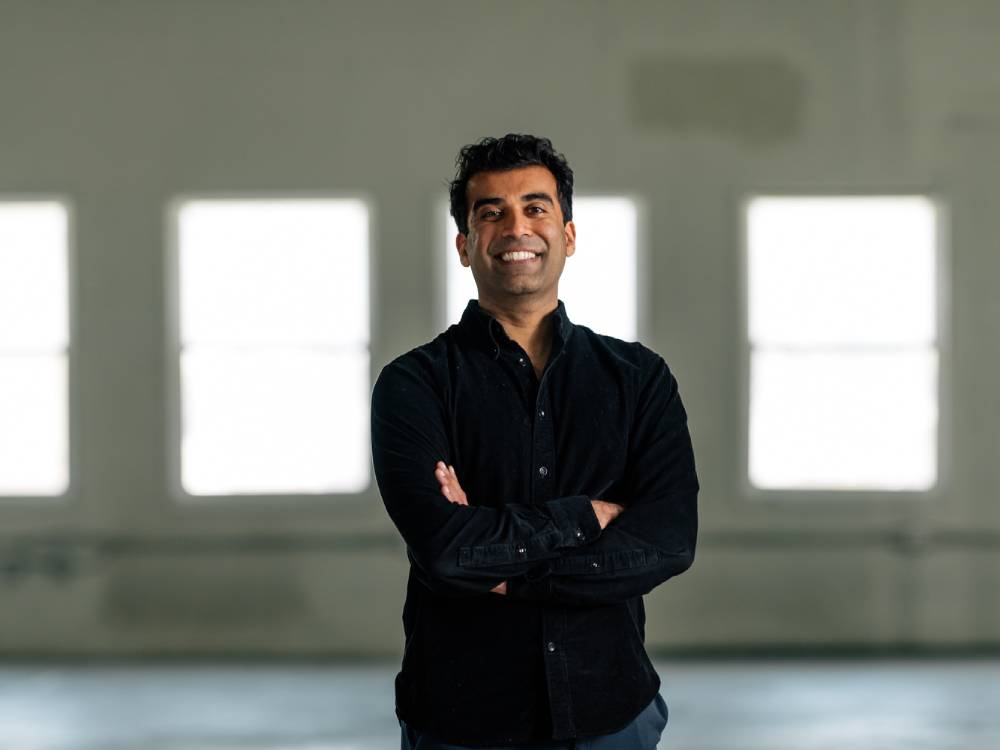For this week’s Reality Cheque, we’re busting the myth that saving is always better than financing and getting a loan.
Sometimes financing makes sense, and sometimes saving up does. Find out the reasons for both situations.
By Lisa Jackson
You’ve probably heard it a thousand times: “Never borrow what you can save. Save first, spend later.” It sounds like the kind of timeless wisdom that your parents, your bank and your financial advisor would all agree on. Saving feels safe. Debt feels dangerous. But is it really that simple?
“The old advice treats all borrowing as bad and all saving as good, but real financial health is about balance and intention,” says Robb Engen, a fee-only advisor and founder of the award-winning blog Boomer & Echo. “A reasonable mortgage or car loan can be a tool, not a trap, if it fits within your plan.”
Under the right conditions, not borrowing can actually cost you. And, as Engen puts it, saving just for the sake of hoarding cash isn’t progress.
“The goal isn’t to avoid risk or debt altogether,” he says. “It’s to make money decisions that align with your values and move your life forward.”
So, when does it make more sense to save—and when does borrowing win out? Let’s break down this money myth.
Why do Canadians fear debt?
For decades, many Canadians have been raised on an anti-debt diet. But what’s the origin story?
Put on your legwarmers—we’re heading back to the early 1980s, when Canada was battling a serious inflation problem. To get it under control, the Bank of Canada (BoC) hiked its overnight rate above 20% in 1981. That’s the equivalent of a 23% variable-rate mortgage in recent years, according to the Rotman School of Management. Even as late as 1990, rates pushed up again to almost 14%.
Borrowing back then wasn’t just expensive, it was punishing. Mortgages, loans, even car payments came with suffocating interest costs. You didn’t leverage debt; you survived it.
Those years left a deep mark. Many Canadians watched their parents struggle to pay for (and keep) their homes while keeping household budgets afloat. Taking on debt could risk financial ruin. No wonder future generations learned to fear borrowing and glorify saving.
That mindset didn’t disappear along with high interest rates. Many younger Canadians inherited that cautious outlook. Add in high living costs, student debt, job-market uncertainty and housing stress, and the fear of borrowing can still feel downright dangerous, even when it’s the smarter move.
For newcomers, the culture shock can be real. In many countries, debt carries stigma or is harder to access. Arriving in a credit-driven economy like Canada’s, where your financial reputation depends on using debt responsibly, can take some getting used to.
Fast-forward to today: credit is accessible, and debt has become part of everyday life. Nearly every Canadian adult has at least one credit card, and credit purchases now account for more than half of all retail spending by total value.
“Debt is a fact of life for most Canadians—whether that’s a mortgage, car loan, student loan, or a line of credit for a big one-time expense,” says Engen.
Yet the “save first” mindset lingers like financial folklore. People in debt are often made to feel like they’ve made foolish mistakes, when external factors (think: job loss, divorce, or lack of financial literacy) can play a role.
Even as Canadians say there’s no shame in seeking financial help, nearly half admit they’d feel embarrassed to reach out if things got bad enough to consider bankruptcy, according to an Ipsos poll.
Yikes.
Why borrowing can actually be the smarter move
The idea that borrowing is automatically “bad” ignores a powerful truth: money’s value depends on time. What your dollar can do today may be worth more than what it can do after years of saving. Let’s look at some scenarios.
1. Interest rates are low
When borrowing is cheap, the “save first” rule starts to lose its authority. Low rates reduce financing costs, letting you reach goals sooner without draining your savings.
“The lower the interest rate, the more attractive borrowing becomes,” says Engen. “That makes perfect sense, so long as you don’t overextend your borrowing capacity and still have enough cash flow to live your life. Borrowing makes sense when it helps you reach a goal faster without compromising your long-term financial security.”
2. The opportunity cost
If you’ve built a strong investment portfolio, draining it for one big purchase can backfire. The S&P 500 has historically earned around 10% a year, while a new car loan might cost you 4%, depending on the lender and terms. So by paying cash, you could be giving up more in growth than you’d ever save in interest.
“I’ve had clients with money parked in high-interest savings or cashable GICs at 4.5% wondering if they should pay down their 2% mortgage,” says Engen. In many cases, keeping those funds invested or liquid can be the smarter financial move. For example, say, you’re buying a $40,000 car. You could pay cash or take a five-year car loan at 4% while keeping your investments compounding at 10% in a registered account. Let’s compare:
Example: financing a $40,000 car vs paying cash
Car cost: $40,000
Loan interest rate: 4% (0% if you pay cash)
Monthly car payment: ~ $737 ($0 with cash up front)
Total interest paid (5 yrs): ~ $4,200 (again, $0 when paid in cash)
Total interest earned (10% annually, compounded monthly on $40K): ~ $25,812 (and $0 with cash, as that’s money withdrawn)
Total value of your investment account (10% annually, compounded monthly on $40K): ~ $65,812 ($0 with money withdrawn)
Net position after loan payoff: ~$20,000 ahead (and $0 ahead if you paid cash)
By financing the car at 4% and keeping your investments growing at 10%, you could end up around $20,000 ahead—and still have your savings in the bank.
“Investing steadily and letting time do the heavy lifting is what builds wealth,” says Engen.
3. Liquidity matters
Once your cash is spent, it’s gone. Financing strategically keeps your savings intact, so you’re not scrambling when life happens. If a big purchase would drain your emergency fund and leave you with nothing for “uh-oh” moments (like a busted laptop, car repair or vet bill) it might make sense to finance instead.
Some of us, says Engen, “ may be better off financing a vehicle or using a HELOC for a small renovation, rather than draining limited savings just to avoid debt.” (HELOC stands for home equity line of credit.)
He adds that some clients are so fixated on being mortgage-free that they neglect their underfunded RRSPs and TFSAs.
“With no savings they might be forced to dip into a more expensive HELOC to cover the costs—getting right back into debt,” says Engen. “Liquidity is flexibility. You don’t want to win the ‘debt-free race’ only to find you’ve trapped all your cash inside your four walls.”
4. Inflation and the rising cost of living
Prices rarely sit still. Even as inflation cools, the cost of living keeps creeping higher.
“Inflation quietly erodes purchasing power,” says Engen. If prices are rising, it may make sense to purchase now and pay back the cost over time at a reasonable rate.
Again, imagine you’re saving for that $40,000 car, and prices rise around 5% annually for new vehicles. Waiting five years to pay cash could tack roughly $11,000 onto the car’s price tag—more than you’d pay in interest on a low-rate loan.
Example: What a $40,000 car costs if car prices rise 5% annually
Today: $40,000
After 1 year: $42,000
After 2 years: $44,100
After 3 years: $46,305
After 4 years: $48,620
After 5 years: $51,051
“I remember when housing prices were climbing so fast in Vancouver and Toronto that would-be buyers trying to save a 20% down payment had no chance of keeping up,” says Engen.
In a world where prices don’t wait for your savings to catch up, “time is money.” Borrowing strategically can sometimes protect your purchasing power instead of eroding it.
When saving first makes sense
All that said, borrowing isn’t always the right move. Sometimes, the old “save first” rule still applies.
“Mathematically, saving first will almost always leave you better off,” says Engen.
1. To pay for short-term expenses or goals
If you can save up and buy it within a few months, skip the loan. Paying with cash means no interest, no debt and no stress—and that’s priceless.
2. When interest rates are high
When borrowing costs are steep, saving first makes more sense. If loan rates hover around 7% while your savings earn 2.25% in a high-interest savings account, you’re not earning enough to cover interest paid on the loan. And if you’re using credit cards to finance big expenses, the math gets ugly fast—many charge around 20% interest.
Example: $5,000 vacation, repaid over 2 years
Personal loan
Interest rate: 7%
Approx. monthly payment (2 years): ~ $223.86
Total interest paid: $372.71
Total cost: $5,372.71
Credit card
Interest rate: 20%
Approx. monthly payment (2 years): ~ $254.48
Total interest paid: $1,107.50
Total cost: $6,107.50
Meanwhile, that same $5,000 in a 2.25% savings account would earn just $230 in two years.
4. When your credit utilization ratio is high
If your credit cards are near maxed out, lenders see you as a risk, even if you’re making payments, according to TransUnion. When your utilization ratio tops 30%, your credit score can drop, making future borrowing more expensive.
If your balances are high, pay cash (or wait and save). Lowering your utilization first can boost your credit score and help you secure better rates later.
5. You’re already juggling a lot of debt
When you’re already carrying multiple balances, borrowing more just piles on interest and stress.
“It’s perfectly fine to take out a car loan and pay it off over three to five years,” says Engen. What you want to avoid is stacking major debts—like financing two cars and a renovation at once. That’s a recipe for stress. If you’re disciplined about paying off one big purchase before taking on the next, “debt becomes a tool instead of a trap.”
Should you borrow or save? Be strategic about money, not superstitious
Saving feels safe. Borrowing feels risky. But money doesn’t care about feelings—it cares about math.
Crunch the numbers. Ask the right questions. Sometimes saving wins. Sometimes borrowing does. The key is knowing the difference—and having the confidence to choose what truly serves you.
“Just remember the saying: ‘You can afford anything, you just can’t afford everything’,” says Engen. The same applies to borrowing. “Spend less than you earn, invest the difference, and use debt strategically, not fearfully.”
Lisa Jackson is a personal finance journalist and editor based in Hamilton, Canada. Her writing has appeared in Canadian and international outlets, including Al Jazeera, The Globe & Mail, Toronto Star, and other publications
Read more from this issue of The Get:
- MVP: Blue Jays announcer Dan Shulman captures the moment
- Should I help out with my parent’s finances?
- How can Gen Alphas and Zers find a job in this economy?
- How the Bank of Canada’s interest rate announcement affects Canadians
-----------------------------------------------------------------------------------
The Get is owned by Neo Financial, and the content it produces is for informational purposes. Any views expressed are those of the individual author and/or of The Get editorial team., not of Neo Financial or any of its partners or affiliates. The content is not meant to replace professional financial advice, and it should not be the sole source for making any financial decisions. Always do your due diligence before deciding what to do with your money. Read The Get’s editorial mandate.
-HHqkeqJlAzMFv2fTj0iSfs5GLhgsuY.jpg)


